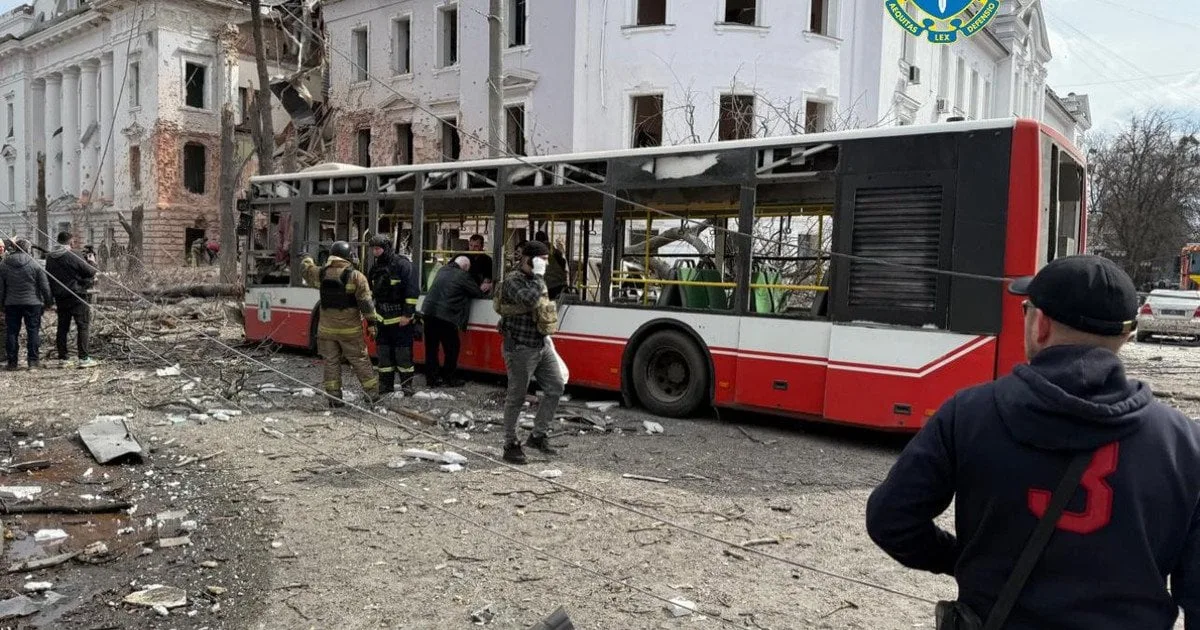The full-scale war in Ukraine has been going on for more than two years, leaving behind devastated civilian infrastructure and severe shortages of basic services. OCHA’s May report highlights progress in aid delivery, but also major challenges, from funding shortfalls to the danger to humanitarian workers themselves. This article looks at how the fighting is affecting civilians, what international and local organisations have already done, and what risks remain on the horizon.
Read also: Violations of children’s rights in Mykolaiv region – Ombudsman’s report
Risks to civilians
In the frontline regions of Dnipro, Donetsk, Zaporizhzhia, Kharkiv, Sumy, Odesa and Kherson, in March and April 2025, hostilities led to a significant increase in the number of attacks on residential areas. In just two months, more than a hundred cases of shelling were recorded, damaging at least 2,500 homes. Multi-storey buildings in cities of regional significance, as well as rural areas, suffered the most damage, with systematic shelling disrupting water, gas, and electricity supplies.
Civilians who remain in the areas of active hostilities face not only direct threats to their lives, but also lack of access to medical care: the delivery of patients to hospitals is hampered by damaged roads and lack of transport links. Many are forced to move to safer regions, which in turn puts additional pressure on the local social infrastructure of host communities.
Threats to humanitarian workers
The intensity of the fighting has seriously hampered the work of humanitarian missions. In March and April, two staff members of international organisations were killed in the line of duty: shelling of convoys and roadside bombs caused tragic incidents. Another 16 people were injured, including volunteers from local NGOs.
In addition to physical damage, humanitarian organisations suffer from the destruction of their own infrastructure. Over the past two months, at least 24 attacks on warehouses, offices and technical facilities have been recorded. Most of the incidents occurred in large cities, where the likelihood of shelling remains high due to the proximity to logistics routes.
Read also: Where can a veteran go for help? Rehabilitation centres in Ukraine
Scope of assistance
Despite the challenging conditions, by the end of March 2025, 2.3 million Ukrainians had received critical assistance. International partners and local organisations distributed food parcels, hygiene kits and basic medicines. Mobile medical teams played a significant role, providing care to more than 120,000 patients in remote communities.
An important initiative was the interagency convoys that delivered humanitarian supplies to the most isolated villages in Donetsk, Zaporizhzhia, Kharkiv, and Kherson. As a result, more than 23,000 people received vital goods, ranging from food to basic equipment for infrastructure restoration.
The impact of limited funding
The main threat to the sustainability of the humanitarian response is the reduction in funding. Due to the lack of funds, many programmes in key sectors such as water, healthcare, social support and cash assistance have been suspended or curtailed. Local NGOs have been particularly affected, as they do not have financial reserves to support their initiatives.
Unless international donors are able to quickly redirect resources, vulnerable populations will lose access to basic services and their ability to respond to new emergencies will be limited.
Read also: “Security is a common cause”. Interview with Tetiana Nehaichuk about hromadas
The human component of the tragedy
On 13 April 2025, one of the largest tragedies of recent months occurred in Sumy: a rocket attack on the city centre killed at least 30 civilians and injured dozens of people. The impact on residential buildings, public transport and a school caused destruction that required an immediate response from rescuers and volunteers.
“We arrived a few minutes after the strike,” says Igor Klymenko of the Proliska Humanitarian Mission, “We first evacuated the wounded, then set up temporary aid and psychological support points”. At night and in the following days, the townspeople organised a collection of items, bakers, and doctors worked — everyone tried to help, despite the fear and shock.
The UN Secretary-General immediately condemned the attack, stressing the prohibition under international humanitarian law against the targeting of civilian objects and civilians. Expressing his concern, he called on all parties to the conflict to abide by the rules and protect the life and dignity of every human being.
Read also: Life after the frontline: programmes and opportunities for veterans



